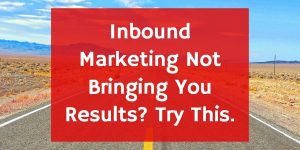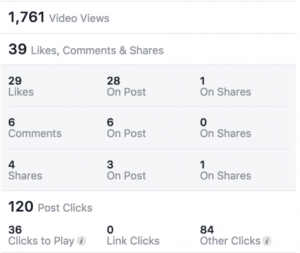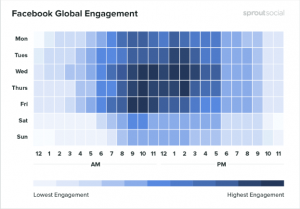If there’s one thing people check every day, it’s their email. Not Facebook like you might think, or their favorite marketer’s Instagram feed. It’s all about email.
Think about it: reaching out to someone in their inbox is one of the most personal things you do online. You’re extending a handshake into their private domain and opening up a virtual conversation.
This is why creating an email list for your infoproduct business is so important. People might miss your Twitter update, the inconsistent Facebook algorithm might not show your post to anyone, let alone the people it might hit a nerve with.
Email, however, is made to connect. It’s made to land in inboxes, made to be opened – it’s not made to be missed or scrolled past.
You might think that it’s a good idea to wait until you’ve scraped together some semblance of an audience before you start growing your email list, but if there’s one tip I can give you: Start right away. If you are putting out valuable content, people will be interested from the start (and, let’s face it, for all they know there could be 10,000 other people on your list with them).
Creating an engaged email list was one of my first goals for Performance Marketer and one of the best resources for all of my businesses.
Even though Performance Marketer hasn’t been around that long, we’ve managed to grow our list to 20,000 people, and in one of my other business we’ve cracked the 100,000 mark.

This means there are 107,881 people who are interested in what we’re doing and what we’re selling.
So how did we build up such a large, engaged email list and how can you replicate what we did?
It’s quite simple actually when you boil it down to its basics.
- Set up your list
First and foremost, you’re going to need a list, which means you need to sign up for an email marketing provider (a.k.a. a place where you can store all your email addresses and send mass emails from).
The most popular email marketing providers:
These platforms have a range of features that make it really easy to connect with your list and build relationships.
Taking it one step further: segmentation
It’s really important that your email list is highly focused if you want people to open your broadcasts and interact with your content (and buy from you).
This can be difficult when you have a range of offerings that might not be the best fit for everyone on your list.
So how do you get around this?
By implementing segmentation. Most of the email marketing providers above allow you to create a number of different lists using “tags”, where you can split up your subscribers depending on the behavior they have taken, their specific interests, or how they signed up (was it through a highly-niched content upgrade? Was it through a giveaway? Etc.).

A screenshot of some “tags” in ConvertKit. Notice how there are tags for purchasers, customers, and challenges.
And after you’ve built your lists?
- Consider what your audience want
People aren’t just going to give away their email addresses for free (and no, that doesn’t mean you have to pay for them). Instead, you want to offer them something in return – a goodwill gesture if you will.
This is called a “lead magnet”, where you exchange a juicy piece of content for an email address. But this juicy piece of content really needs to resonate with the kind of people you want on your list.
For example, if you want to create a list of outdoor gear lovers, offering a lead magnet with 10 best paleo diets isn’t going to attract the right people.
At Performance Marketer, we offer a lead magnet that highlights 114 niche membership site ideas. With my other business, we give away a document with 187 e-commerce niche ideas.
Why do these work so well?
- Because they’re highly targeted towards our audiences
- They are in-depth and valuable (114 and 187 ideas? That’s a huge amount that’s well worth giving an email address for)
But you don’t just have to give away a list. Think about what kind of content your ideal audience devour (Visual? Video? Text-based?) and consider the best way to present information in your industry.
You could:
- Package up a series of videos
- Create a mini-course that’s delivered by email when people sign up
- Offer a free webinar replay
- Put together a short e-book
- Create a swipe file of important checklists and worksheets
The possibilities are endless.
- Add sign-up points to your site and create a landing page
It’s all well and good having an incredibly valuable, juicy offering ready to hand out, but you need to direct people to it. They won’t just stumble across it by accident (I’ll talk more about how we specifically did this for Performance Marketer and my other business further down).
You need to make it easy for people to sign up. As humans, we’re inherently lazy and will always try and take the easiest route possible. Which means, if you don’t have a clear sign-up form that highlights your awesome offering, the easiest route might be clicking off your site and never coming back.
Where should you promote your free offering?
Let’s focus on your website for a moment before we take things over to Facebook. There are endless places to put a sign-up form that promotes your offering, but you don’t want to go overboard.
On each form, you want to emphasize what people will get when they enter their email. Don’t be afraid to sing from the rooftops about how your free offering will solve their problems.
You might consider:
- Adding a pop-up to your site

Pop-ups are some of the most high-converting forms you can have on your site. The one above is powered by OptinMonster, but there are plenty of other brands you can choose from that allow you to customize your pop-up.
With most pop-up tools, you can choose when it pops up – perhaps you want it to appear when someone’s been on your site for X amount of time, or maybe you want it to spring into action when they move their mouse to click off your site.
- Adding a Welcome Mat

A welcome mat sits at the top of every page on your site and is the first thing visitors see when they arrive. It simply offers one thing, limiting their options and choices (remember: people will always try and take the easiest route so make it super simple for them to choose your offering).
- Adding forms at the bottom of your posts
Not everyone will land on your homepage. In fact, I’m willing to bet the majority of visitors will come through various different blog posts via social media or organic Google search.
Which means there is so much potential on every single blog post. Which then means you need to have a form at the bottom of each post, so when people are reeling from all the amazing information you provided them with, they have the opportunity to sign up to your offering and get even more amazing information.

At the bottom of every post on Performance Marketer, we add a form that details a free download that readers can grab if they just hand over their email address.
- Creating a landing page
You’re definitely going to want a landing page dedicated solely to capturing sign ups for your offering. It doesn’t have to be anything fancy, just a place that details the benefits of the product and has a form where people can enter their email addresses.

As you can see, our landing page for Performance Marketer’s main free offering is really simple.
What about if your website doesn’t get many visitors?
- Set up Targeted Facebook Ads
This is the number one way we grew both our lists when our audiences were still small.
Facebook Ads give you the chance to get your brand (and free offering) in front of people that really want it.
How? Through really narrowing down who you want to reach.
Facebook allows you to hone in on your ideal customer depending on their job, relationships, online behavior, financial status, and so many other determining factors.

We have an in-depth post that shows you how you can create successful Facebook ads that point to a specific landing page (a.k.a. the landing page for your free offering), but for the basics:
Step 1. Go into your ad creator on Facebook by clicking the cog next to your name and then selecting the right option.
Step 2. Create a new ad campaign and upload an image of your offering or an eye-catching, relevant visual.
Step 3. In the copy of your ad, you want to highlight the benefits of your offering and what people will gain by signing up for it (will they grow their business? Will they learn how to create a workout that suits their lifestyle?)
Step 4. Create your custom audience and really hone in on the kind of people you want to target. Don’t just stop at simple demographics. Go further and consider what these people do for a job, what they like to do in their spare time, and what their main struggles are in life and business.
Step 5. Link the ad to your landing page where people can sign up for your free offering.
You can also experiment with different types of ads, different copy, and different images to see which works best with your audience.
- Create an Email Marketing Strategy
So now you’ve got the email addresses, it’s time to start communicating with the people behind them.
It’s really not enough to simply broadcast to your list when you have something to sell.
If you want to create an engaged list that laps up every communication you send, you have to work on building relationships. That means providing useful information that has no ulterior motive.
Okay, great, but what kind of emails can I send? I hear you ask.
What kind of emails to send your list
- Behind-the-scenes emails
Show them what goes on behind the scenes. Give subscribers an insight into how you run your business and the people behind it. This makes things really personal and helps them get a better understanding of you and your brand. For example, my team is relocating to Austin Texas in August. You can expect to see pictures of the new office.
- Awesome articles you’ve found
Don’t just send your own blog posts, either (though it’s a good idea to keep your list up to date on your blog posts – they did sign up because they were interested in what you have to say, after all).
You can also send your list awesome articles you’ve found on other sites; articles that help them solve their problems. Ultimately, this builds trust because your subscribers know you have their back and you’re willing to go out of your way to help them.
- Discounts and offers
Now, I know I just said you shouldn’t be all sell, sell, sell in your emails, but your email list should feel like an exclusive, special place to be. That means offering your subscribers discounts on your products and sharing offers with them before you share them with anyone else. Think of it like an exclusive club.
- Exclusive articles
Hold back some of your blog content especially for your email list. Sending them exclusive content makes them feel special and elevates your list to something that’s more than just links to your blog posts and promotions.
Creating an engaged email list should be one of the very first things you do when starting an online business. Building a list of like-minded people who are interested in what we have to say is how we’ve managed to create two successful businesses in a short space of time.
These are the people who continue to buy from us and promote our offerings without us having to lift a finger and, in this day and age, that’s absolutely invaluable.
Business & Finance Articles on Business 2 Community(81)









